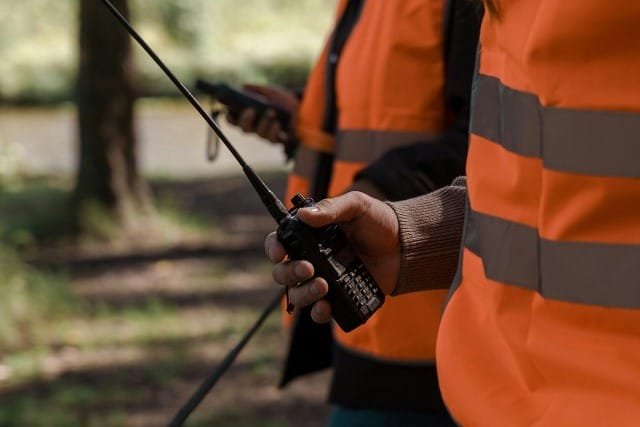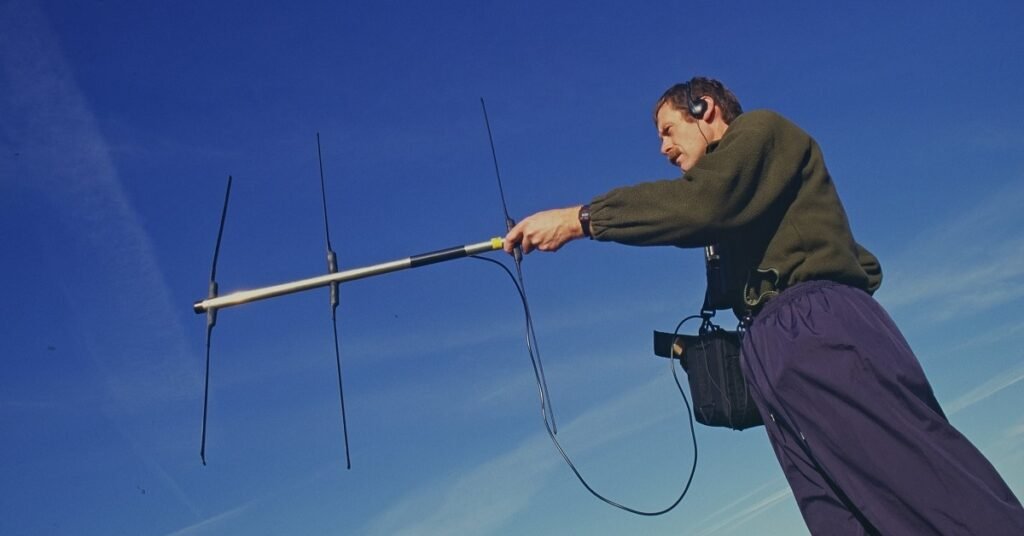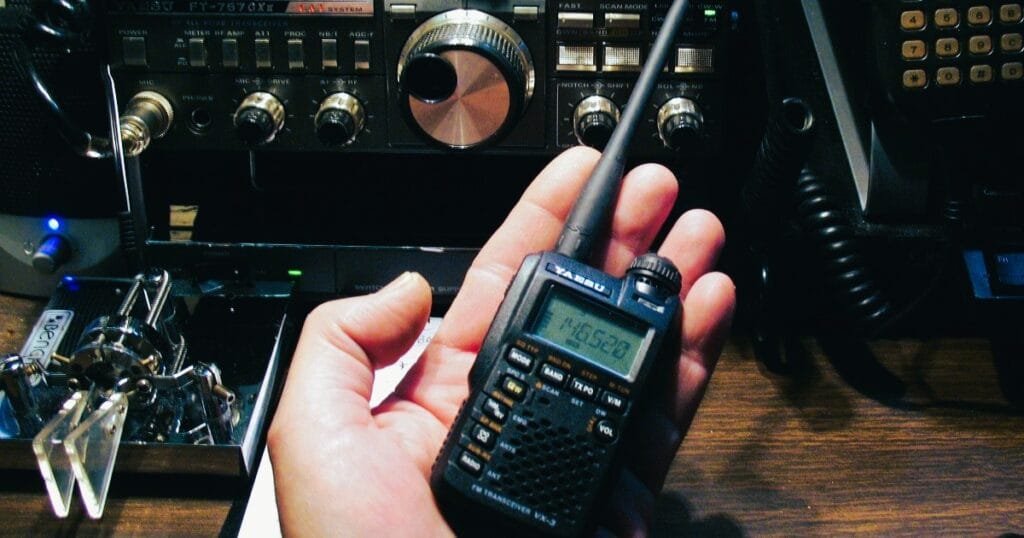Table of Contents
ToggleCan They Track My Walkie-Talkie? A Walkie Talkie Signal Review
Ah, walkie-talkies—those useful little tools that make us feel like covert agents on a mission or toddlers playing in the garden. These devices are incredibly useful for hiking with friends, organizing an event, or establishing a neighborhood watch. But here’s a question that frequently comes up in conversations: Can walkie talkies be monitored or traced? It’s a genuine issue, especially if you’re not simply using them to coordinate pizza delivery. When you dig into reviews like any in-depth ham radio review, concerns about signal tracking often surface as part of discussion. So can someone actually track your walkie talkie signal? Let’s go into the realm of technology, dispelling any common myths and guaranteeing a thorough comprehension of the subject. This allows us to successfully distinguish the facts from the misconceptions, presenting a more realistic picture of what technology involves.
Understanding How Walkie-Talkies Work
It is important to look at how walkie talkies work before figuring out if they can be traced. The basic difference is a Walkie-Talkie or ham radio that uses the Radio frequency for communication from one to another means it’s like a two-way communication device. This allows users to communicate in real time with each other anywhere within its frequency spectrum and coverage area. The devices don’t use cell towers or satellites like a smartphone, but rather communicate with each other over radio waves.
Most walkie-talkies operate on UHF and VHF bands, also known as Ultra High Frequency/Very High frequency. VHF/VHR for open areas everywhere from hills to prairies, and the UHF range provides better clarity in urban settings. The range is model, environment and frequency band/used bit rate specific but can be short in some cases. However, because these frequencies are unlicensed anybody with the right gear can listen too. While not a huge deal most of the time, it does beg the thought someone could track your walkie-talkie signal.
Get a detailed and clear understanding of how walkie-talkies and other ham radio devices work by clicking here.
Can Someone Trace a Walkie Talkie Signal?

This impeded the crucial unanswered question: can they trace your walkie-talkie? The short answer is yes, but getting this done is a lot more complicated than you would imagine. Let us break it down.
1. Walkie Talkie Signal Detection
If your walkie-talkie broadcasts, it generates radio waves which can be picked up by anyone with the right equipment on hand. This process, often called “Signal Hunting” or “Radio Direction Finding”, involves the use of special purpose antennas and instruments to track back a radio signal. For the most basic terms it is to play hide and seek with radio signals.
However, not everyone has access to these equipment. Signal hunting is often done by law enforcement, the military, or radio hobbyists who have invested in specialist equipment. The normal individual will be unable to track your signal unless they are aware of your frequency and are in range. It’s not as straightforward as tracking a GPS signal on your smartphone, so casual eavesdroppers won’t know your specific position.
For a better understanding of wireless signals, you should also learn about radio frequencies and radio waves. Click here to learn more.
2. Triangulation
If this were a spy thriller, the next stage in tracking your signal would be triangulation. This approach uses numerous locations to detect your signal and establish your location by measuring the time it takes for your signal to reach each detection station. Triangulation can provide a reasonably accurate estimate of your position.
This strategy, however, demands advanced technology and skill, therefore it is often kept for high-stakes missions such as law enforcement. Unless you’re involved in something illegal or dealing with a professional tracker, most walkie-talkie users aren’t concerned about triangulation.
Who Can Trace Your Walkie Talkie Signal?

With proof of concept down, the next critical question is who has the ability to track it with a handheld device. If you look at the key players in this space.
1. Law Enforcement
If you use your walkie-talkie for questionable or criminal actions, police enforcement can track your signal using sophisticated techniques. However, they usually require legal authority, such as a court order, to conduct such tracking. So, unless you’re involved in a critical situation, they’re unlikely to bother following your interactions.
2. Government Agencies
In the United States FCC, The Federal Communications Commission checks and maintains records which radio frequencies are being used in different places at any time. The FCC, for example, might come after you if your transmission is blocking the emergency services’ frequencies. However, this is a (technical) mistake unless you are cheating.
Curious about which walkie-talkies and frequencies cops use? Click here to read more in detail.
3. Radio Enthusiasts
Another group of people that can track signals is amateur radio operators and other enthusiasts. In fact, some radio aficionados indulge in a pastime known as “fox hunting,” which involves tracking down concealed radio transmitters. While they are unlikely to be seeking your walkie-talkie signal explicitly, if you use one in an area with a large ham radio population, you may unwittingly become the target of their signal search.
What About Encrypted Walkie Talkies?

Now, one question that may arise in your mind is: if we choose to use an encrypted ham radio model, what will it be like? By using complex algorithms to jumble communications, encrypted models improve privacy by making it much harder for unauthorized parties to intercept and decode the conversation. Nevertheless, the lingering question persists: Does this encryption fully resolve the issue? So, yes and no.
Encryption may safeguard the content of your communication, guaranteeing that even if someone intercepts your signal, they cannot comprehend what you’re saying. Encryption does not, however, completely prevent someone from detecting your signal. It merely makes it tougher to understand your message. So, even if your chat is encrypted, your signal may be tracked back to your location.
Many high-end gadgets, particularly those mentioned in a ham radio review, include encryption features. This is useful in professional contexts that require anonymity, such as security teams or emergency services.
Click here to learn more about radio privacy codes.
How to Minimize the Chances of Being Traced
There is very little chance that someone out there has a vendetta and knows where you are but, for those who venture off the beaten path some precautions can be taken to minimize risk. Here’s how.
1. Use Low Power Settings
Most walkie-talkies let you change the power settings. Using a lower power setting shortens the range of your broadcast, making it more difficult for someone far away to detect your signal.
2. Change Frequencies Frequently
If you’re concerned about being monitored, you can change your frequencies on a regular basis. This makes it more difficult for anyone attempting to track your signal to stay focused on your position.
For a better understanding of which frequencies you can use, click here to learn about the frequency chart.
3. Use Encrypted Channels
As previously stated, encryption does not prevent signal detection; nevertheless, it does provide a layer of protection to your communications. If your walkie-talkie allows encrypted channels, utilize them.
4. Avoid Long Transmissions
The longer you broadcast, the simpler it is for someone to identify and follow your signal. Transmit your messages as needed. Do not make long transmissions, as they increase the possibility of being traced.
5. Consider Digital Walkie-Talkies
Analog radios are less secure than digital radios. Features such as encryption and frequency hopping make it significantly more difficult for someone to trace or intercept your connection. If security is an issue, switching to a digital form is worth considering. Many ham radio evaluations recommend digital devices for people who want safe, confidential communications.
When Signal Tracing Matters

While the normal individual does not have to be concerned about being traced, there are real-world scenarios in which tracking a walkie-talkie signal is vital.
1. Search and Rescue Operations
Finding walkie-talkie signals during search and rescue activities can save lives. Rescue personnel frequently employ radio direction finding techniques to track down signals from missing hikers or stranded persons. In such cases, tracking and tracing are very useful.
2. Criminal Investigations
On the darker side, criminals may utilize walkie-talkies to organize unlawful actions. Law enforcement organizations can follow their signals to assist arrest offenders. In these situations, signal tracing is critical to protecting public safety.
Walkie Talkie Signal: The Role of Advanced Equipment
If you read any ham radio review, you’ll discover that many amateurs utilize far more complex equipment than basic walkie-talkies. These high-tech radios frequently have longer range, encryption, and even GPS tracking capabilities. To avoid detection, some can hop frequencies or transmit in low-power, narrowband mode. While this degree of knowledge is rarely required by regular users, evaluations frequently emphasize the necessity of understanding the equipment’s capabilities, particularly where privacy is an issue.
Final Thoughts: Should You Worry?
In most circumstances, the likelihood of your walkie-talkie being traced is low. Unless you’re participating in illicit activities, doing high-stakes operations, or using unapproved frequencies, there’s a low possibility that someone will monitor you.
Walkie-talkies are still an enormously important tool for communication. For the ordinary user, whether it’s for a camping trip, arranging an event, or staying in touch with pals, the advantages greatly exceed the little dangers of being tracked. And if you’re still concerned, you may take efforts to reduce your chances of being traced, such as employing encryption and keeping your broadcasts brief.
As you read your next ham radio review, take in mind the larger context of privacy and security. While these technologies provide a lot of convenience, recognizing their limitations and possible weaknesses allows you to make the most of them without unneeded worry.
So go ahead and schedule that trek, organize that event, or simply speak with your pals, knowing that in most circumstances, you won’t be monitored. But if you start feeling like you’re in a spy movie, simply keep your broadcasts brief and sweet!


